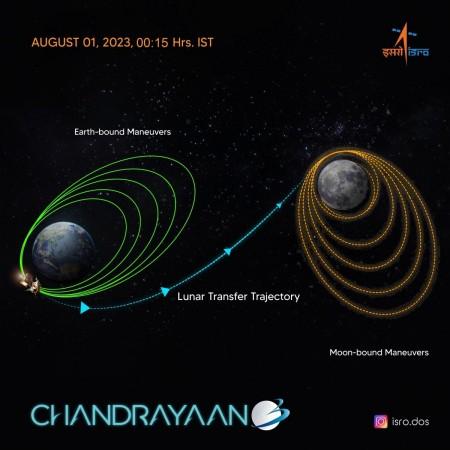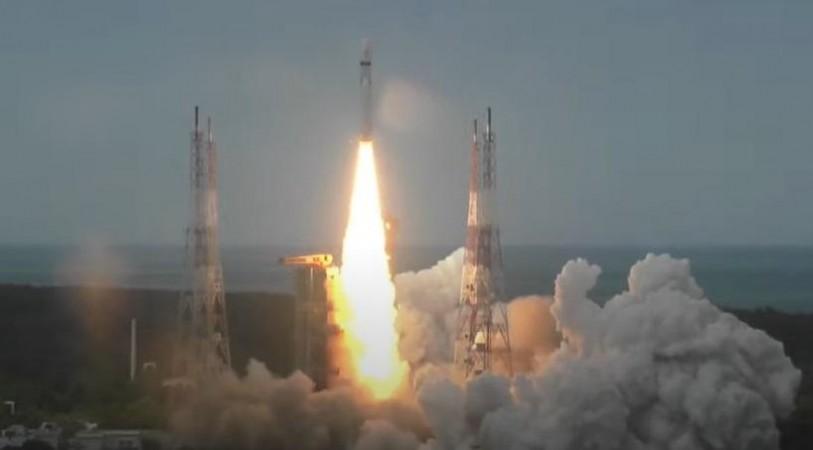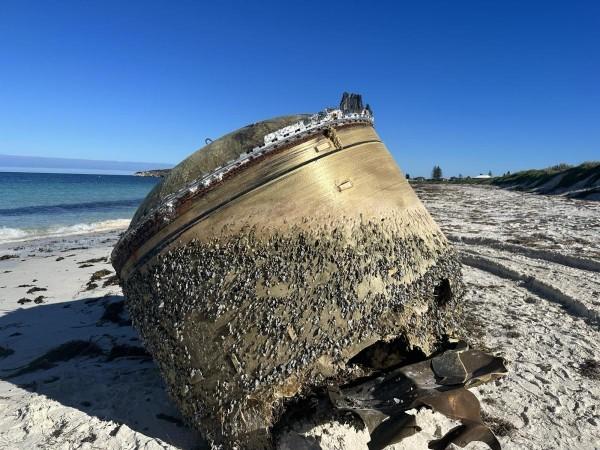In a remarkable display of India's prowess in space exploration, Chandrayaan-3, the nation's highly anticipated lunar mission, is gearing up to take the celestial stage.
As the third iteration of India's lunar program, this ambitious venture promises to further elevate the country's scientific endeavors in outer space as the Indian Space Research Organisation (ISRO) on Tuesday successfully injected the Chandrayaan 3 -- spacecraft to the moon -- into the TransLunar orbit, an official said.
"Chandrayaan-3 completes its orbits around the earth and heads towards the moon. A successful perigee-firing performed at ISTRAC, ISRO has injected the spacecraft into the translunar orbit. Next stop: the Moon. As it arrives at the moon, the Lunar-Orbit Insertion (LOI) is planned for August 5, 2023," ISRO tweeted.

Translunar orbit injection is the process whereby the moon-bound spacecraft is put into a trajectory so that it can reach the moon. The Indian space agency said it will carry out the LOI process on August 5, 2023.
The Chandrayaan-3 spacecraft was put into orbit on July 14, 2023, in a copybook style by India's heavy lift rocket LVM3. The Chandrayaan-3 spacecraft comprises a propulsion module (weighing 2,148 kg), a lander (1,723.89 kg) and a rover (26 kg).
The main object of the mission is to safely land the lander on the lunar soil. The lander will get separated from the propulsion module a couple of days after it enters lunar orbit. The lander is expected to make a soft-landing near the South Pole of the moon on August 23 evening at 5.47 p.m.

The lander will descend to the moon from a height of about 100 km from the moon's surface. The soft landing is a tricky issue as it involves a series of complex manoeuvres consisting of rough and fine braking.
Imaging of the landing site region prior to landing will be done for finding safe and hazard-free zones. Subsequent to the soft landing, the six-wheeled rover will roll out and carry out experiments on the lunar surface for a period of one lunar day which is equal to 14 earth days.
After meticulously learning from the experiences of its predecessors, Chandrayaan-1 and Chandrayaan-2, ISRO is leaving no stone unturned to ensure the success of the lunar expedition.

With Chandrayaan-3's landing on the horizon, anticipation is soaring within the scientific community and among the general public alike.
This momentous mission has the potential to bolster India's position as a frontrunner in the global space race and contribute significantly to humanity's knowledge of the Moon's enigmatic terrain.
(With inputs from IANS)














